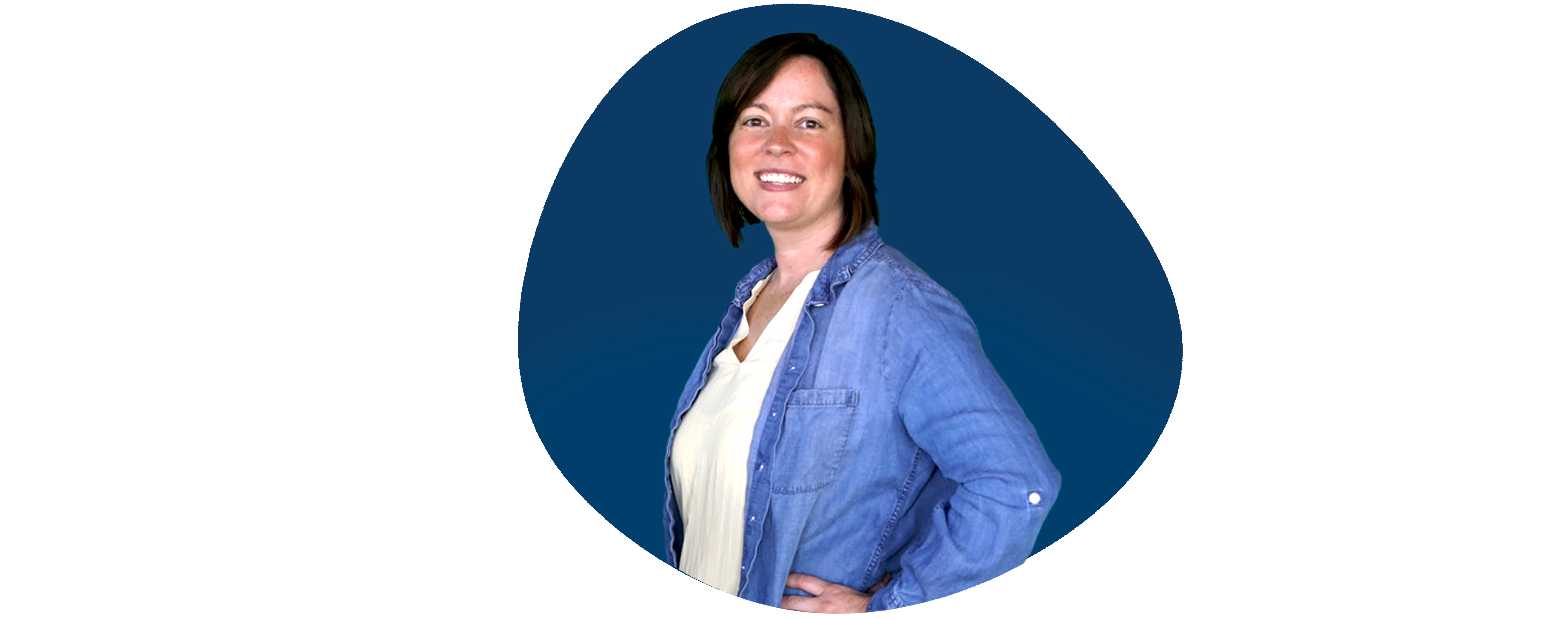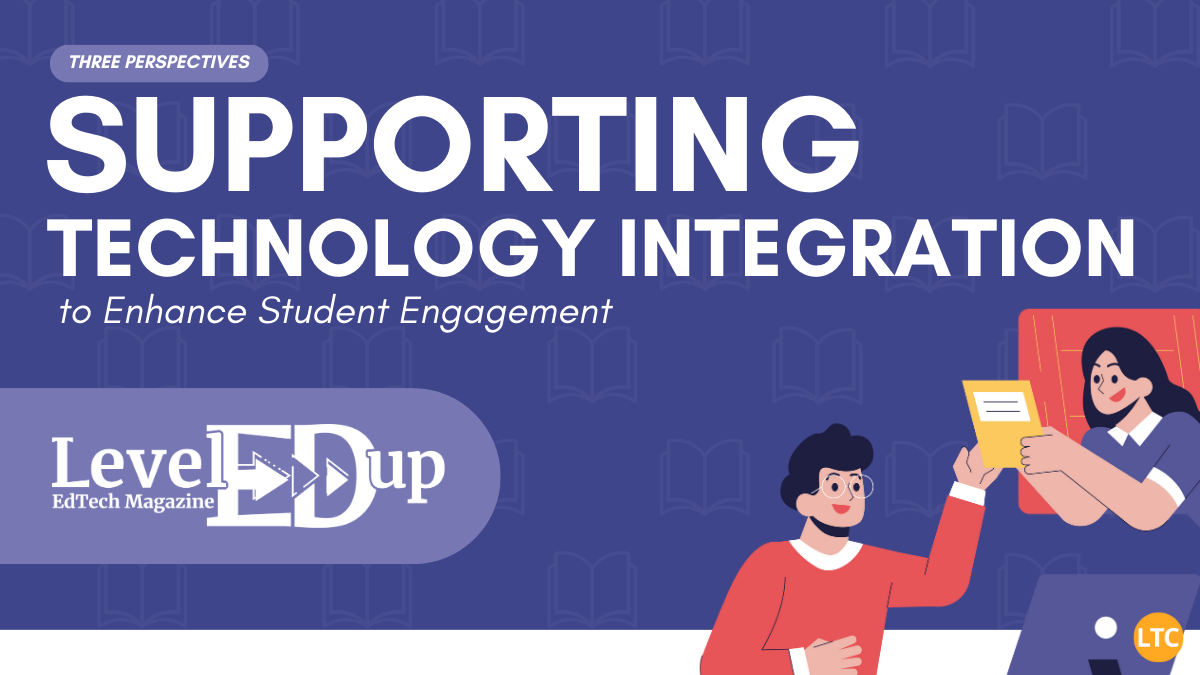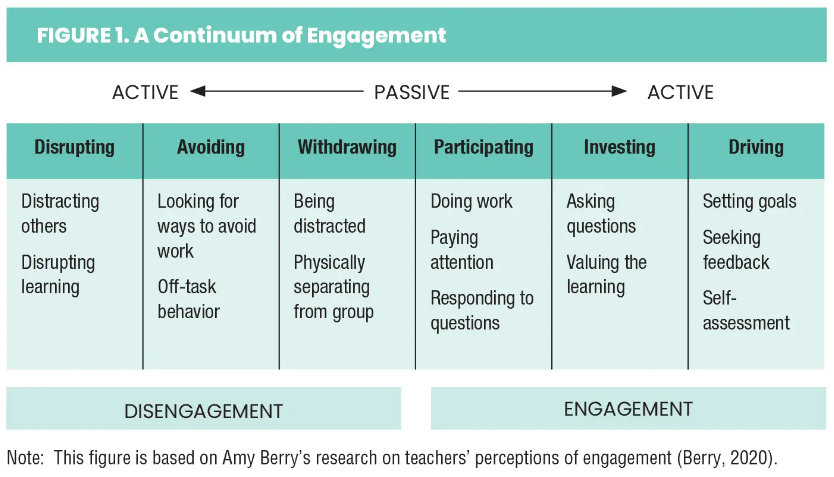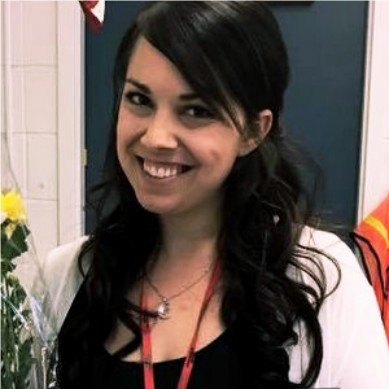Edtech Coaches Networking Group: A Community of Connected Learners
No coach is an island. Stay connected to innovative strategies, impactful resources, and supportive peers through our monthly online networking group for tech-focused coaches.


Publication Note: This guest article, written by Dr. Elizabeth Freeman, Dr. Ami Engel, and Dr. Desiree Larson of Community Unit School District 300, was originally published in LevelEDup magazine (Spring 2023). The article can be read in its original format here.
Student engagement is essential to maximizing student learning. Recent research by Gallup suggests that “students who are engaged are 2.5 times more likely to say they do well in school and are 4.5 times more hopeful about their futures than their disengaged peers” (Ravaglia, 2023). Berry (2020) further illustrates that divide through recognizable behaviors in this continuum of student engagement:

When students work from a place of compliance, they robotically “do school,” checking off the boxes that adults determine are important. By comparison, when students work from a place of engagement, they exhibit increased motivation, demonstrate a stronger sense of belonging, and become more accountable for their own learning – all leading to more positive and productive learning outcomes.
Purposeful technology integration, with the support of instructional coaches and administrators, can noticeably increase student engagement. However, individual devices and apps alone cannot generate novel student engagement. It takes the effort of teachers, coaches, and administrators working in tandem to allow technology to bring out the best in students.

At a basic level, a teacher’s purpose is to help students reach their learning goals. For many teachers, it is a fulfilling experience to create an environment where well-crafted activities are used to achieve a specific learning goal, not to mention make the full learning experience meaningful and fun.
These engaging experiences all come down to pinpointing purpose and planning accordingly. In addition to monitoring student progress and providing timely feedback, strategies for maximizing learning and engagement could include involving students in developing the goals, differentiating instruction to address specific needs or interests, and creating space so that students can identify their own path to reaching each goal.
These important tasks can all be accomplished by utilizing classroom technology. Doing so places students at the forefront of their learning as content creators, not just content consumers.
At the same time, students also gain more agency and choice in their learning when digital tools are used to transform learning, rather than substitute for an analogue tool.
For example, teachers can reach for digital tools that empower students to select their own readings, curate resources, record and edit videos, author books and comics, design and build with 3D printers, create virtual reality modules, and so much more.
Regardless of platform or content area, all of these learning experiences offer the potential for increased student engagement as well as the chance for students to showcase their learning through personalized applications.

Instructional coaches are tasked with supporting teachers’ technology integration beyond generalized technical instruction.
In many cases, they support teachers’ use of technology in curricular settings, especially when it comes to using certain apps or devices to increase student engagement.
This can be a scary shift for teachers, who may already feel that their students have more tech know-how than they do. To help teachers grow as tech users, coaches must recognize these fears and provide a safe space that encourages teachers, alongside their students, to take these productive risks.
When they do, teachers see their students become technology integration leaders, helping fellow students troubleshoot and discover new uses for existing tech tools. Student engagement, in turn, increases, even among previously unengaged learners, such as a student who was unengaged by a written essay assignment but jumps at the opportunity to demonstrate their learning through a video essay.
Overall, this coach-led shift creates a student-led environment where the students are engaged and responsible for their learning – a major boon that any teacher can appreciate.

As leaders among leaders, administrators also have an important role to play in the tech integration and student engagement conversations.
Not only can they provide the necessary encouragement and support, but they can also model purposeful tech integration for their entire faculty.
Here are a few examples of successful technology modeling administrators can try or demo during a staff meeting or inservice day:
By demonstrating the intent and application of different tech tools, certified staff will be more engaged in staff meetings and walk away from trainings with actionable knowledge they can immediately apply in their classroom.
In turn, teachers who take part in these hands-on tech demos will go forward with greater enthusiasm for tech integration, making them more likely to try and use future tech tools as they come along.
When teachers, instructional coaches, and administrators all work together to enhance student engagement, learning can expand to new heights. Purposeful technology integration can make those efforts even more potent, and open new doorways to infusing agency into students’ learning experiences.
Want to discover even more actionable insights you can use to fully harness technology in your school or classroom?
Subscribe to LevelEDup magazine, the LTC’s quarterly digest marquee news, topics, and trends from Illinois’ robust edtech community.

Each issue is FREE and comes packed with resources geared toward every edtech role, including K-12 teachers, instructional coaches, administrators, and IT staff.
You can also read about all of these timely topics in the Spring 2023 issue (available now):


